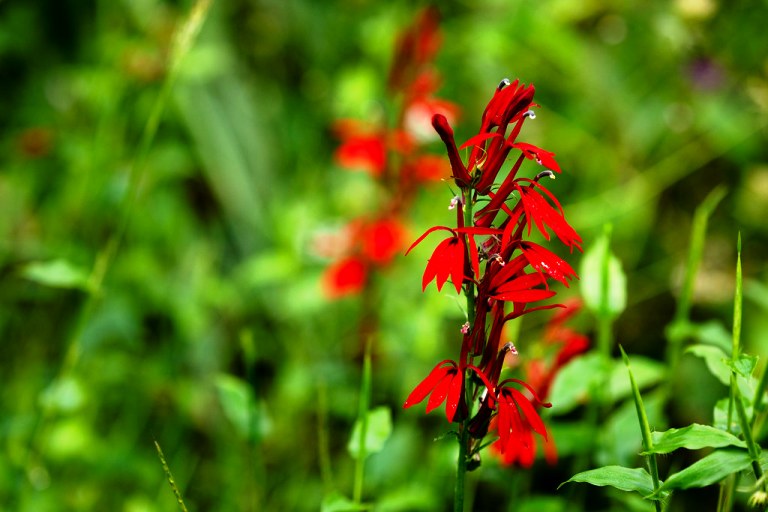Rafflesia is a genus of parasitic flowering plants. It contains about 28 species including 4 partly characterized species as recognized by Willem Meijer in 1997. This flower has been found in southeastern Asia, in the Philippines, Thailand, the Malay Peninsula, and in Borneo, Sumatra. Indonesian guide Dr. Joseph Arnold actually discovered Rafflesia in 1818 in the rainforest of Indonesia.
The Rafflesia flower was named after Sir Thomas Stamford Raffles, the leader of the expedition. Although it was found even earlier by Louis Deschamps in Java somewhere between 1791 and 1794, his notes and illustrations, seized by the British in 1803, were not available to western science until 1861.
The dramatic Rafflesia flowers are sometimes considered the largest single flowers in the world; the leathery petals can reach over 90 centimeters across. Rafflesia is a parasite that depends totally upon its host; the mainstream of the plant’s tissues exists as thread-like strands completely within the host’s cells.
These host plants are vines of Tetrastigma spp., and the Rafflesia plant is itself not visible till the reproduction stage when the flowers first bud through the woody vine and then open into the brilliant spectacle that is world-renowned today.
The flowers can take up to 10 months to mature from the first visible bud to the open bloom, which may last no more than a few days. Presently 17 species of Rafflesia are recognized and these primarily differ in the morphology of their flowers. In general, the flowers contain five leathery petals that are orange in color and mottled with cream-colored warts.
There’s a deep well in the center of the flower containing a central raised disc raised that supports numerous vertical spines. The sexual organs are set beneath the rim of the disk, and male and female flowers are separate. But a few have bisexual flowers. Little is known about seed dispersal.
However, tree shrews and other forest mammals eat the fruits and disperse the seeds. Rafflesia is the official state flower of Indonesia, the Sabah state in Malaysia, and the Surat Thani Province, Thailand. The flower’s appearance and smell like a rotten body, henceforth its local names which translate to “corpse flower” or ‘meat flower’. The foul odor entices insects such as flies, which transport pollen from male to female flowers.
The name “corpse flower” applied to Rafflesia can be confusing because this common name also refers to the titan arum (Amorphophallus titanum) of the family Araceae. Moreover, Amorphophallus has the world’s largest un-branched inflorescence; it is sporadically credited as having the world’s largest flower.
Both Rafflesia and Amorphophallus are flowering plants, but they’re only distantly related. Rafflesia ‘Arnoldii’ has the largest ‘single’ flower of any flowering plant, at least in terms of weight. A. titanum has the largest ‘unbranched’ inflorescence, while the ‘talipot’ palm forms the largest ‘branched’ inflorescence, containing countless flowers; the ‘talipot’ is monocarpic, meaning the individual plants die after flowering.
Due to insufficient quantity and the short-lived lifespan, much about these plants remains covered in mystery. Unluckily, one of the few natural sanctuaries of the plant, the Malaysian rainforest, is at its darkest hour, with hundreds of square kilometers being wiped out every year. Therefore; excessive habitat loss is the main concern regarding the future of these magnificent flowers, as well as many other flora and fauna with which they share a habitat.
There is, though, a reason for hope as botanists in Borneo have recently achieved what was believed to be impossible: they artificially grew a Rafflesia flower on a host plant. Given the fact that its bud blooms into a flower at midnight during the rainy season and that the flower itself only lasts for limited days, you’ve to plan your exploration trip carefully while also relying on luck.
Also Read: Lamium is an Excellent Ground Cover for Shade.







